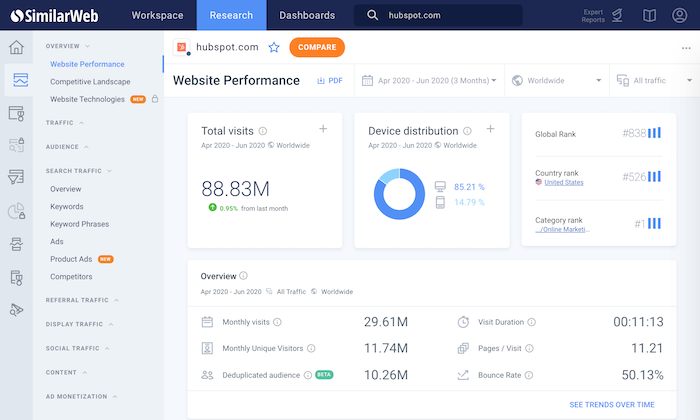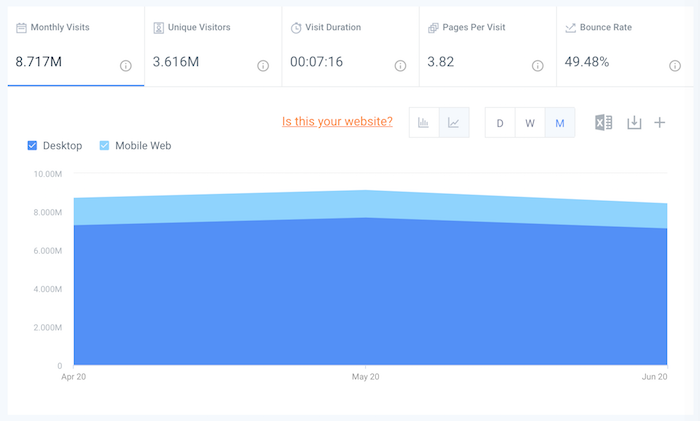As an owner or employee of a small business, we know your time is limited. Marketing isn’t your only hat and if you’re confused on where to start for Facebook, we’re here to help. Over 90 million small businesses use Facebook and its related products.
There are many reasons for a small business to use Facebook. The network boasts 2.45 billion monthly active users and 74% of its adult users who earn more than $75k are on the platform.

Not only does Facebook cover a wide demographic range but it also serves as a multi-use platform for small businesses. Potential customers use Facebook to discover new businesses, research them, receive ads and more. Having a Facebook Page establishes brand credibility and for some businesses, can take care of a customer from start to finish without ever leaving the site.
From setting up a Page to the promotion, here are some expert tips on how to get the most out of your Facebook Page as a small business.
Facebook Page setup for small businesses
Facebook offers a wide range of products so it can be understandably daunting to figure out what works best for you. If you’re starting fresh on a Facebook Page or it’s been a while since you performed a Facebook audit, these tips are for you. Not every feature is meant for every type of business, but it’s especially important for small businesses is making sure everything is up to date.
Choose the right category & template
You can change your categories, subcategories and templates anytime so don’t sweat if you don’t pick the right one at the beginning. However, refining to the right selection is specifically important for small businesses because categories are key for discovery, and templates unlock important features like shops and reviews.

Customize your tabs
When you go through the Page templates, you’ll be able to see which tabs are available to you. After applying the template, you’ll then be able to hide and add select tabs, as well as rearrange their order. So, for example, if you think you’ll be investing in a video marketing strategy, then you should move the Videos tab up further in the lineup.
Customize CTA button & link a catalog
If you’re a service or product-based business, then taking the time to set up your call-to-action button and linking your product catalog is important. These features allow your customers to book directly or purchase from your Page without ever leaving the site.

PRUDY Braiding Studio lists its services and has a CTA button for booking appointments. When a customer is interested in a service, they can click it to learn more and then use the button to book their appointment. This flow provides a seamless experience for customers.
At the time of this writing, Facebook Shops is rolling out to all businesses as a way for them to promote new products.
Tip: A bonus for setting up these features is that they also become available to you if you have a linked Instagram account. Set this up once for two networks.
Set up Messenger & more
A prime advantage of being a small business is that you’re more nimble than the larger ones. This means that direct communication with customers via Messenger might not need to go through as many approval hoops.
![]()
Messenger has evolved from a peer-to-peer chat box to a customer service platform. Add your availability times, FAQs and even automated responses.
The above are just the basics for setting up a Facebook Page for a small business. There are far more tips you can explore, including using Facebook Business Manager to manage multiple permissions and learning about the verification process to further establish your brand credibility.
Facebook Page promotion & execution
Once your Facebook Page is set up to your liking, it’s time for promotions and posts to begin. Explore a variety of post ideas to bring in more engagement and consider using a content calendar to plan out your work. Having this is in place helps you understand what’s missing and how to space out your posts.
Run occasional discounts or flash sales
No one likes to miss out on deals. The latest Sprout Social Index indicates that 40% of consumers follow brands on social media to learn about promotions and discounts. Why not give them what they want?

To enhance your social promotions, use Facebook’s ad offer feature so you can track how many are actually taking advantage of the sale.
Cross-promote your content
As a small business, you need to be savvy about how you use your content. One platform’s content could be reused on another if the audience and goals fit. A small tweak in caption is less time consuming than creating fresh content.
Even better, if you use Instagram Stories frequently, you can link your Facebook Stories to them so every time you publish Stories on Instagram, you also publish the same content to Facebook.
Set up expectations for social customer service
The same Sprout Social Index report found that when consumers follow brands on social media, 74% of them will reach out for customer service or support. If you’re going to use Facebook as a platform for social customer service, you’ll need to set up those expectations beforehand with clear information for your customers. Don’t wait for someone to message and then wonder what the next step is going to be or when they’ll hear back.
As mentioned earlier, Messenger has multiple ways for you to manage this expectation, including your own availability for responding to messages. Your away message here should include your hours and helpful links if you have those available.
Schedule posts
Once you have the content and calendar all ready to go, it’s time to schedule all those posts. Facebook has a robust native scheduler or you can use software like Sprout to help manage posts across multiple platforms.

The Sprout schedule not only shows drafts and scheduled posts but the ViralPost feature will automatically schedule based on your brand’s highest engagement times. You may not need a scheduling tool if you’re just starting your social presence, but over time you’ll likely find saving the time and effort for other parts of your social strategy to be an advantage.
Learn more about Facebook for small business
Facebook isn’t a set-up-and-done kind of social media platform. It’s constantly evolving in features, ads and newsfeed algorithms. Your campaign strategy from last year might not work as well this year if you repeat it without consideration of new social trends and features. Because of this constant evolution, it’s important to continue learning and exploring new strategies.
Custom audiences for ads
One of the strongest ways to advertise on Facebook is to use the custom audience feature. You can retarget those who have visited your website, engaged with your ads and most recently, taken certain shopping actions. Custom audiences take advantage of sources that you already have in place, like a newsletter list, and advertises to them. These people are likely more receptive to the ads because they’ve willingly followed or interacted with you already.
Review analytics
Without analytics, you can easily find yourself floundering in the midst of all your content efforts. How do you know if a post was successful if you don’t look at how it performed? Facebook’s native Insights tab gives you a plethora of information from engagement to clicks to Page actions.

However, with business growing, you might find yourself with a need to present analytics graphics to investors or management. Analytics tools like Sprout help you easily understand what’s going on with your Page and will generate presentation-ready graphics for you with the click of a button.
Keep up on new features
As mentioned before, Facebook is not a static platform. New features are constantly added and the advantage of being a small business is that you can easily test these out without a complex and time-consuming chain of approvals and inputs.
For example, your business might benefit from adding a Shop feature, allowing you to tag products on a post and for consumers to purchase from it. A larger business may have difficulty linking a huge catalog but a small business with a focused offering could do it easily.
COVID–19 grants
With the COVID–19 pandemic severely impacting small business operations, Facebook announced a $100 million cash grant for small businesses and an additional $100 million to Black-owned small businesses, creators and nonprofits. Take a moment to see if you qualify for the program.
Take Facebook for Business courses
It’s to Facebook’s advantage for business owners to get the most out of their platform. Because of this, the company created an entire resource library for businesses. The resources range from new features relevant to businesses to singular courses to helpful case studies for inspiration. Exploring resources like this and reading about new Facebook strategies puts you ahead of the curve and at a competitive advantage to other small businesses.
Conclusion
Facebook doesn’t have to be a daunting platform for small businesses. Once you break it down into steps, a Facebook marketing strategy is easy to learn and execute. Small businesses need to pay attention to details like the CTA button and set up Messenger to take full advantage of what the platform offers. With the right approach and upkeep on new features, you’re well on your way to being a pro at Facebook. For the latest data on how marketers and consumers are using social media, explore the Sprout Social Index.
This post Expert tips on using Facebook for your small business originally appeared on Sprout Social.
from Sprout Social https://ift.tt/3i3supd
via IFTTT





















